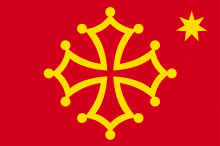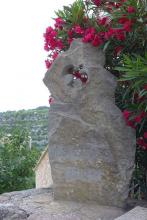Statement of intent: This second podcast explores the symbolism of the bird in ancient and modern poems and music.
In this second podcast, we investigated the symbol of the bird in troubadour poetry and music, as well as crusade songs and modern Occitan poetry. As with many traditional troubadour poems, this podcast began with a natureingang, featuring a reflection on the surrounding natural scenery that inspires a poet to begin his or her song. Birds, in these traditional natureingang openings, represent spring and happiness and can remind the poets of either delight or sorrow in their lives. Many times the poet continues on to represent the bird as his or her own voice, and beseeches the bird to sing and deliver the poet’s message as best as it can. Because many of troubadours’ poems were performed by jongleurs, birds can also represent the jongleur or the poet’s message itself, as seen in Peire d’Alvernhe’s poem Ben a ten gut dreg viatge, where he says to his bird, “you will go for me / to his dwelling, when the morning comes, / and tell him with an honest tongue / how I wait on his desire” (Goldin, 169).
The song of the bird is alluded to in both troubadour lyrics as well as melodies. Some poems incorporate actual musical terms into the lyrics, such as melismas mentioned in Giraut de Bornelh’s poem Can lo glatz el frechs e la neus (Goldin, 190) and modulations mentioned in Jaufré Rudel’s poem Quan lo rius de la fontana (Goldin, 102). Others mimic birds’ chirping in their musical performances, using high trills and ornaments to recreate the songs of birds. An example of this is Gerard Zuchetto and the Troubadour Art Ensemble’s rendition of Rudel’s Quan lo rius, in which the flute is heavily utilized to imitate the nightingale’s song. Interestingly, ancient bestiaries, such as one by Pliny the Elder written in 1st century CE, specifically highlight the fact that nightingales are the only bird known to use “all of the arts that human science has developed in the mechanism of the flute.”
While many troubadours talk about sending individual birds as messengers to their lovers in afar, many art forms in the same period (see figures 1 and 2) depict birds more as a flock or as part of the surrounding nature and less as unique or individual figures. This mismatch between how troubadours portray birds and how birds are portrayed in popular culture at the time carries an interesting parallel with what troubadours attempt to achieve with their poetry. Instead of being considered as part of a flock, troubadours hope to use their song to differentiate themselves from all the members of their troupe, including the other courtly enemies and false lovers who surround the troubadours and their domnas.
Apart from their role in lovers’ communications, birds, by virtue of their ability to fly over physical barriers and distances, have come to symbolize hope and resistance. In crusade poetry, such as Jaufre Rudel’s Lanquan li horn son lonc en may (Goldin, 104), birds remind the poet of his love far away, a love whose distance from him can only be overcome by the birds’ ability to fly and overcome the physical obstacles between them. Similarly, in the 1907 winemakers’ resistance song Se Canta, which describes a little bird singing a tune to its lover far away, the bird represents hope and resistance able to fly over mountains and meadows to get to its final goal and destination.
In a more modern example, the bird takes on a spiritual representation of ascension in the contemporary usage of an ascending bird as a symbol of Catharism. Luc Séverac, the sculptor of a stone statue in Minerve that has come to represent Cathar resistance (see figure 3), deliberately carved the bird facing up, instead of facing down as is commonly used to depict the Holy Spirit, and chose a circle to enclose the figure of the bird to create a monument to harmony, instead of a monument to the dead. This spiritual symbolism of the bird is reflected in Matfre Ermengau’s edition of Breviari d’amor, in which the earth is depicted as being in the center of the universe, and surrounded by the classical elements of water, air and fire. Positions further away from the earth and closer to the outer spheres of the universe are seen as purer and more spiritual – the bird, because it transverses through the air, is therefore more spiritual and pure than humans on the earth, giving a historical perspective on why the bird was used as a spiritual representation of hope and ascension.
Poets have continued this spiritual symbolism of the bird into modern times. For example, according to Franc Bardou, modern Occitan poets have employed the bird to depict their spirits or their subconscious. A more general focus on the idea of ascension is also evident in many modern Occitan poems, such as ones by Miquel Decor, who attempts to ascend using his poetry and his words and spiral towards a more spiritual and heavenly state.
Bird symbolism in troubadour poetry (podcast)
Submitted by Stephanie Wing ... on Tue, 07/22/2014 - 00:00
Course:
The Other France: Troubadours and the Politics of Cultural Heritage
File upload:
Project type:




